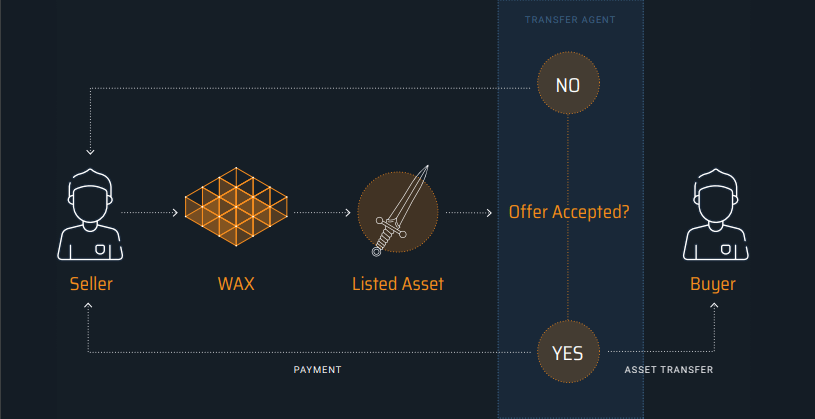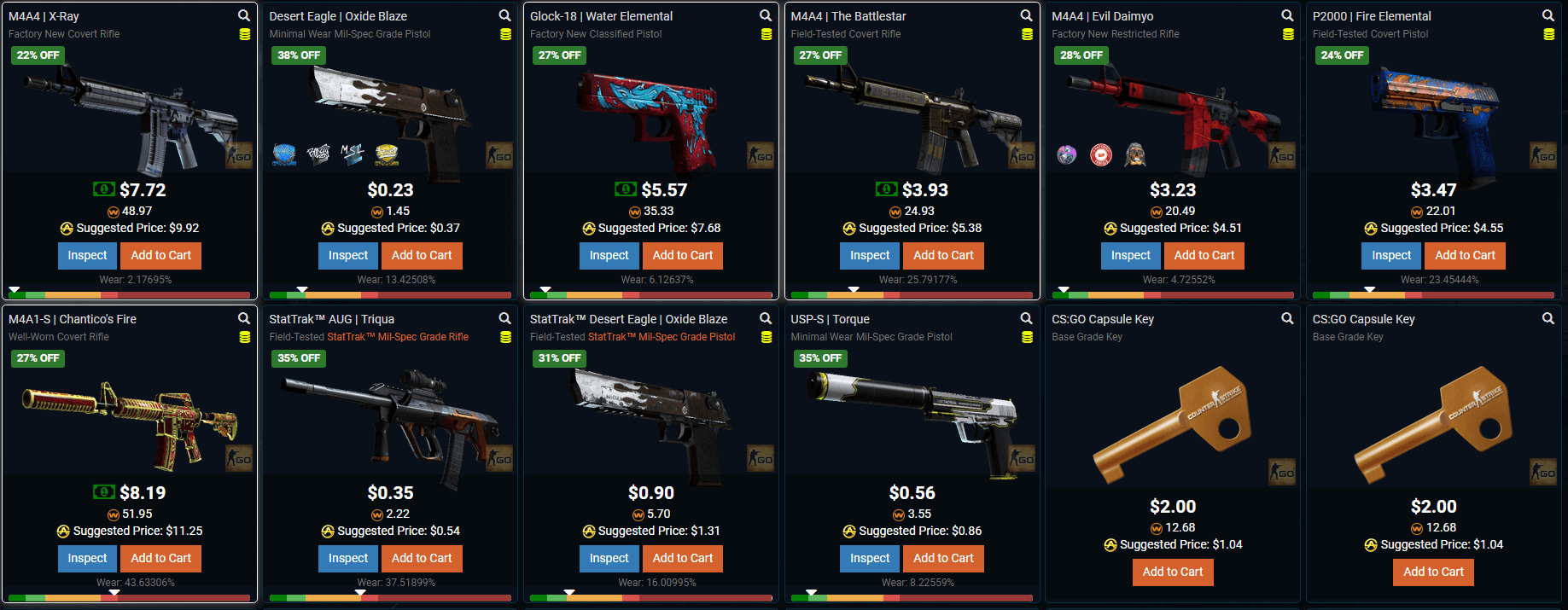Wax Guide | Learn Everything About WAX
OPSkins, the world’s largest platform for trading video game skins and virtual goods, is building a decentralised exchange called WAX. The theory is that real time settlement, trustless and the low costs for deploying contracts to the network, means that blockchain can bring value to this growing virtual economy.
Wax will allow anyone to set up their own store for trading digital gaming assets in a multibillion dollar industry. Will OPSkins be the first to get gaming right with blockchain?
What is Wax?
There is a growing virtual economy for in-game cosmetics (skins), weapons, equipment and virtual territory. Online trading of these items is currently fractured across hundreds of marketplaces. These marketplaces have their work cut out for them building entire platforms, finding ways to trade assets externally of the game economics that created them. Transacting across borders, overcoming geographical trading restrictions.
OPSkins, pronounced O.P Skins, are the world’s largest trading platform for trading video game skins. Their centralised marketplace was created in 2015 to mediate the trade of these digital assets. Why so much interest in video game skins? This is big business. Last year, 400M + gamers purchased $50B+ in virtual items worldwide.

Now seems like a good time for the Wax value proposition stated in their whitepaper. “WAX is a decentralized platform that enables anyone to operate a fully functioning virtual marketplace with zero investment into security, infrastructure or settlement. Developed by the founders of OPSkins, WAX is designed to serve the 400+ million online players who already collect, buy and sell. Wax is an ERC20 token built on the Ethereum network, consequently, most of Wax’s functionality comes from smart contracts. Users will be able to deploy smart contracts that rent, buy and sell digital items. This is all very achievable with smart contracts. They are hindered by Ethereum’s scalability issues. Wax’s success depends on planned updates like Plasma and Sharding, and it also depends on OPSkins’ ability to make a platform or tool kit that people want to use.

Currently, OPSkins plugs directly into Steam and with bots and trade offers, it’s possible to sell Steam marketplace items on OPSkins. Wax will further simplify this. The white paper mentions a simple exchange widget. Honestly, there isn’t much of an explanation for how this is going to work, but comparisons have been made between this widget and metamask. Ideally, this would let people trade Skins across multiple marketplaces and offer up smart contracts to facilitate that trade with an inbuilt plug in. However, this is all speculation. This isn’t OPSkins first stab at cryptocurrency. They trade assets for popular, competitive games like CS:GO, PUBG, H1Z1, Team Fortress and Dota, but they also have a blooming market for CryptoKitties, and recently announced a partnership with Etherbots.io. An Ethereum robot fighting and trading game. 
OPSkins has facilitated over 100+ million purchases annually for millions of customers across 95 countries. Wax investors are just waiting for the team to move a fraction of these volumes onto the blockchain.
Delegated Proof of Stake
Similar to Lisk, Crypti, Ark and Neo, Wax is using a set of consensus protocols categorized as delegated-proof-of-stake. Bitcoin and other proof-of-work consensus algorithms have a slow throughput, and the mining process churns through electricity. Delegated Proof of stake sacrifices a little decentralisation but gains a lot of speed in the trade off. Only certain nodes can confirm transactions and add them the the blockchain. On the Wax network, they call these confirming nodes Guilds. There will be 64 Guilds and they are elected by the community. Each Guild is created with a private signing key and corresponding address, as well as a single public encryption key and private decryption key that is used in a multiparty encryption schema for listing assets. Guilds will specialise in specific games.
The team behind wax gives several reasons for this. Each game has slightly different economies, and it also means that users are voting for nodes that are securing the economy of the game that they are playing. A Guild, for example, could be formed for the World of Warcraft “Aegwynn” server. Players of this game or game/server will therefore be encouraged to support the proposal, while simultaneously supporting the entire WAX Platform. Popular games and servers may have more than a single Guild, providing additional choice in services. For their service, Guilds receive Wax tokens from the block reward and periodically transfer a percentage of these fees to their pledged stakeholders. In addition to Guilds, there are Transfer Agents who are responsible for the in-game transfer of digital assets between Users.
For the privilege of acting as a temporary intermediary, Transfer Agents stake coins, which act as an economic incentive for honesty, or more accurate a economic disincentive for malicious behaviour. Transfer Agent accounts control two Hierarchically Derived (HD) Private Keys. The first is used to generate a master address and child addresses for the acceptance and transfer of virtual goods and WAX Tokens. The second is used to create unique public encryption keys to accept messages from Users. Through this channel, Users can securely communicate their ingame contact info to transfer or receive virtual goods. Each time a Transfer Agent accepts a Settlement Execution Contract, the WAX Platform will force the iteration of the HD Key.
How The Wax Token Works
The WAX token supports all activities and functionality on the WAX Platform. “It’s a platform utility medium that enables users to list items for sale, transact value between each other, settle the transfer of virtual goods, create and service contracts, and propose and vote for Guilds.” When a user wants to make a purchase on the Wax platform, they pay with WAX Token. If the item is listed in a different currency (through a site linking to the WAX Platform), the WAX Token must be converted by the listing agent at the current exchange rate at time of purchase. This was straight of the white paper, but I couldn’t find any mention of how this exchange might work. Another use for the Wax token is voting for guilds. Unlike Ark, and other DPoS cryptocurrencies, Wax weights votes more heavily if the token holder has a reserve of tokens.
It is like the opposite of NEM’s algorithm for encouraging circulation. “When WAX Tokens are transferred, the vote allocations are diminished by the same amount, so it is important to hold a reserve of WAX Tokens to ensure a user’s delegated votes remain sufficiently high.” Similar to ETH Gas and Bitcoin Fees, if a user wants to incentivizes Guilds to include transactions into their blocks, A small amount of WAX Token is used to incentives stakers. This is essentially a network fee.
Should I Invest in Wax?
Trading gaming assets is a serious use case for blockchain. Opskins is a massive platform that already has the connections and the user base to shine in this industry. Gamers can already use Wax tokens to buy and sell in-game virtual items. Battalion 1944 is the 13th new Steam game tradable with WAX Tokens on OPSkins.com. Wax also has a partnership with blockchain backed loan platform SALT to allow token holders to use Wax as collateral for cash loans. I think that Wax is an undervalued altcoin and trading gaming skins on the blockchain is an undervalued use case. There aren’t many altcoins that are created by companies who have already succeeded in their industry. Like Omisego has Omise, Wax has OPskins. This is the biggest thing that Wax has going for it.
Who are The Wax Team?

William Quigley is CEO of OPSkins.com and WAX.io. He was formerly managing director at ClearstoneVenture Partners. William Quigley is a prominent figure in early blockchain technology. He presented “Towards a Satoshi Future: Mass market opportunities for the blockchain” at d10e – a Silicon Valley conference on decentralisation. Malcolm CasSelle is the President of (WAX), and the CIO OPSkins. He is a serial entrepreneur who has played almost every executive role in a traditional startup: technology, product, sales, marketing, distribution and fundraising. John Brechisci, Jr. is a lifelong video gamer, and self-taught programmer. He is the founder and CTO of OPSkins and the lead designer behind WAX (Worldwide Asset eXchange). He doesn’t seem to have any experience developing cryptocurrencies, but considering Wax is built on Ethereum, I think he is more than up to the task. 20% of WAX Tokens are being, or will be, retained by WAX and reserved for development, team, and founders who will continue to enhance the WAX Platform with valuable updates and their use of these tokens will also be time-released.
